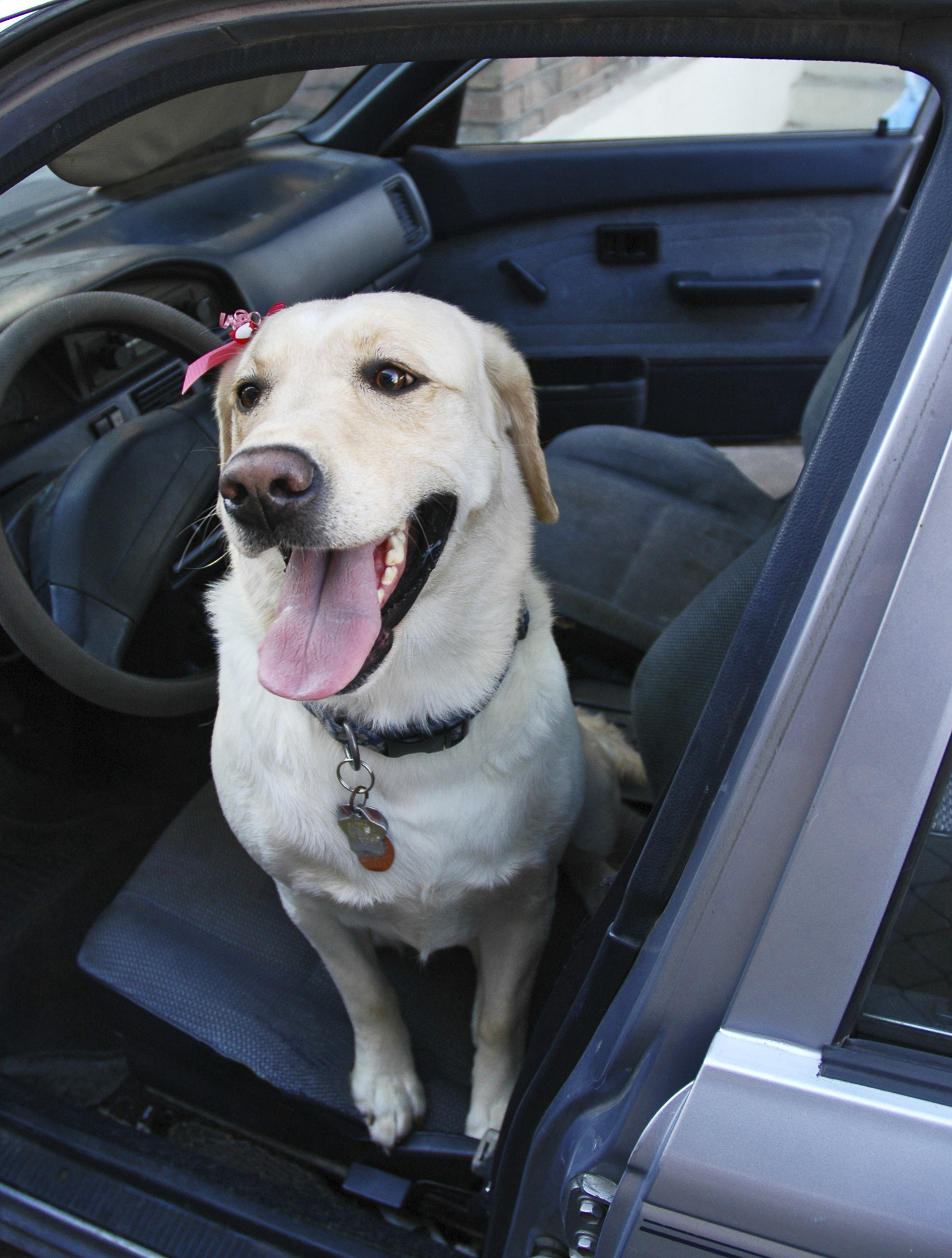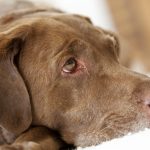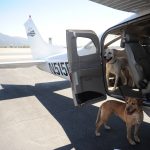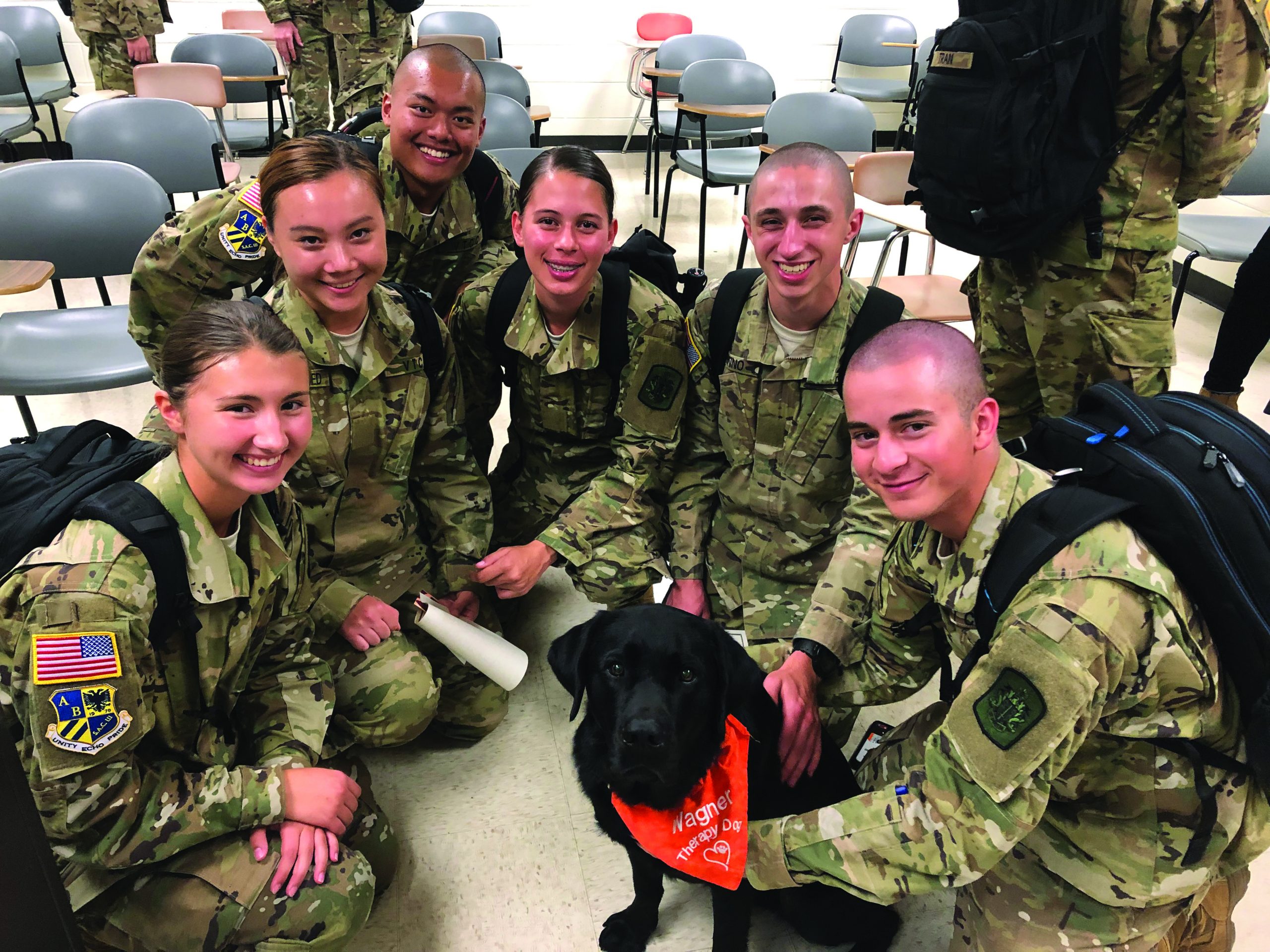by Dr. Dave Erlewein
When Brady brought in his new pup for vaccination, the first words out of his mouth were, “Got any paper towels, Doc?”
“Lots of ’em,” I replied. “Looks like your new pup didn’t enjoy the car ride.”
“Yeah, we only got about a mile down the road and she was drooling, and then a few minutes later up came her breakfast. I really didn’t expect it because she rode for nearly three hours when we got her from the breeder and slept all the way. Not a hint of car sickness.”
This is a very common scenario at our clinic. Car or motion sickness is very common in puppies, and while most outgrow it, a few dogs are affected into adulthood. Other than the obvious drooling and/or vomiting, more subtle signs of car sickness including listlessness, yawning, whining, and uneasiness.
The majority of “experts” blame the immature ear structure in puppies and compare the phenomenon to the higher incidence of motion sickness in children versus adults. Although this is certainly the underlying cause of many cases of car sickness, my personal opinion is that an equal number of cases are simply the result of anxiety and/or a conditioned response to a frequently unpleasant experience such as trips to the vet, kennels, and groomers.
My practice experience has been that more of the stubborn cases of motion sickness will respond to tranquilizers and sedatives than motion sickness pills. But, regardless of the underlying cause, most cases of car sickness will resolve with proper training, maturation, and in a few cases, medication.
Many puppies simply outgrow car sickness with no special training or medications, but there are several simple procedures that will decrease and sometimes eliminate motion sickness. Cracking the windows an inch or two to equalize the pressure in the car when it is moving helps many pups and adult dogs. Keeping the interior cool with fresh air or air conditioning keeps pets more comfortable and reduces anxiety. Providing a non-slip surface for your pet to sit or stand on is a tremendous help as anxiety is dramatically decreased when dogs are not slipping and being thrown around during travel. Foam-backed throw rugs are very helpful in this regard.
The vehicle itself is sometimes a problem. Frequently, dogs are more comfortable in larger vehicles such as trucks and SUVs. If you have more than one type of vehicle, see if your pet is more comfortable in one or the other.
Positioning the dog in the car so it can only see forward rather that to the sides or behind is another helpful procedure but this often difficult unless you have someone to assist you or use a crate or kennel.
Over the years, the training technique that has worked best for my own dogs and many of my clients involves positive conditioning to the automobile. At first, you simply put the dog in the car with the doors open for a few moments and pet or massage the dog if it shows any anxiety. If it is reluctant to get in the car, use a treat and then have the dog sit for a few moments to get the reward. When the dog is comfortable getting in and out of the car with the doors open, get in and close the doors and have a petting/massage session for a few minutes – maybe listen to a song or two on the radio. It’s okay if you need to use a treat.
When your dog is comfortable with this, start the engine and again, sit for a while. Look for signs of anxiety or nausea and if you see anything, shut the engine off. Follow with “good dog” praise and pets, maybe a treat, and get out. Repeat until the dog will sit comfortably for several minutes with the engine running.
Once you get to this point, training involves a series of short trips of increasing length until no signs of anxiety appear. Start by just backing out of the driving and then right back in. If no anxiety, try a trip around the block. No problems, move to a 10-minute ride or “destination trip.”
By a “destination trip” I mean somewhere fun: a dog park, the beach, a walk in the woods, doggie day care, etc. As there are usually three to four weeks between puppy vaccinations, if you start this program the first time your pet acts car sick or shows travel anxiety, you can often cure the problem before the next trip.
Usually it is best to fast your pet for a few hours before traveling, although some dogs do best with just a snack such as a dog biscuit before the car ride. Chew treats that are usually not available when not on a car trip are a great training aid, and the chewing helps to equalize air pressure on the ears much like humans chewing gum during air travel.
Medications that are safe and available over the counter or through your veterinarian include anti-nausea drugs, anti-histamines, anti-anxiety drugs, and tranquilizers.
A word about the air bags found in most new cars. Just like infants and small children, pets are susceptible to injury should these deploy. I feel very strongly that you should keep your pets in the rear seat to avoid injury from these devices. I literally cringe every time I see people driving around with their small dogs on their laps. I have heard stories of both human and pet injuries when the bags have deployed against a person holding their pet, smashing the dog into the owner.
Spending the time to create a “happy traveler” is well worth it. Being able to enjoy a car ride increases the quality of life for both you and your pet. Bonding, trust, and training abilities are all enhanced by conditioning your pet to ride relaxed.








